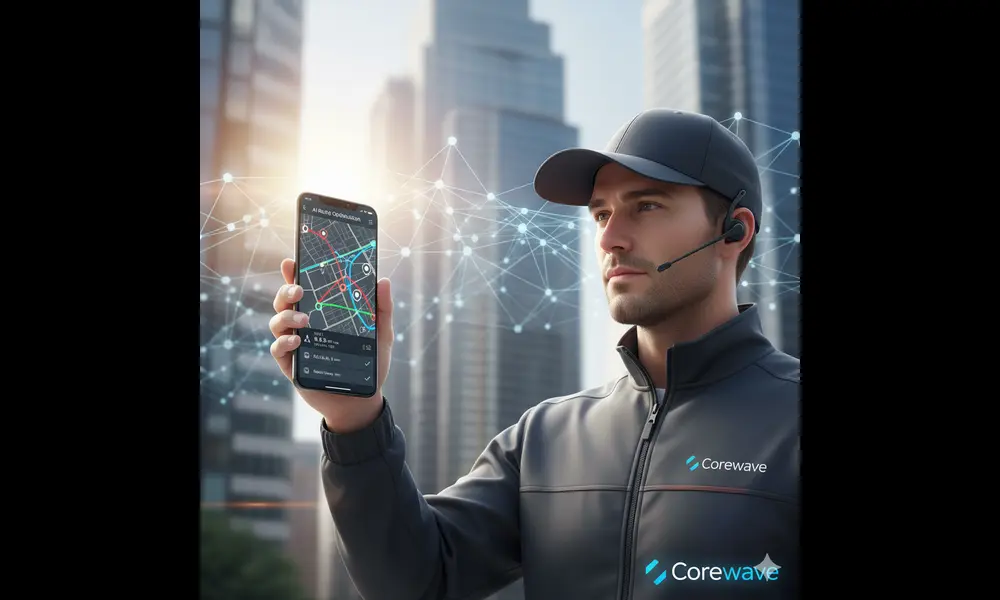In the ever-evolving world of e-commerce, keeping pace with change is like navigating a winding river – full of excitement and surprises. Whether youre part of a Mobile App Development Company, specializing in Android app development or iOS app development, grasping the future of e-commerce is your compass to staying relevant. In this blog, lets embark on a journey to explore the trends in app and web development that are charting the course for the future of e-commerce.
The Unstoppable Rise of E-commerce
E-commerce has evolved dramatically and continues to do so. With consumers increasingly opting for online shopping due to its convenience and endless variety, businesses are continuously adapting and innovating. Lets delve into the trends shaping the future of e-commerce.
1. Mobile-First Approach: Where Convenience Meets Commerce
The future of e-commerce has a name, and its "mobile." Most online shopping now happens on mobile devices, making a mobile-first approach essential. Its not just about having a responsive website; its about investing in mobile app development. For Android and iOS app development companies, this paradigm shift opens up remarkable opportunities.
- Mobile App Development Company: Your role is like that of a master shipbuilder. You craft seamless, user-friendly, and feature-rich e-commerce apps. Making sure these apps are available on both Android and iOS platforms is the key to reaching a broad audience.
- Android App Development Company: As an Android app developer, youre at the forefront of this mobile revolution. Collaborate with e-commerce businesses to create Android apps that offer intuitive user experiences, smooth checkout processes, and effortless navigation.
- iOS App Development Company: iOS app developers are equally vital in this space. Designing iOS apps that align with the latest design and performance standards is the way to captivate the iOS user base.
2. Enhanced User Experience (UX): The Heart of Shopping
User experience is like the warm welcome at the entrance of a store. Its not just about selling products; its about providing a memorable and convenient shopping journey. Emerging UX design trends include:
- Personalization: This is like the sales assistant who knows your preferences. It involves customizing user experiences based on individual behaviors. You show personalized product recommendations, tailored content, and dynamic pricing.
- Augmented Reality (AR) and Virtual Reality (VR): These technologies are like magic portals to new dimensions of shopping. AR allows customers to visualize products in their real surroundings, while VR creates immersive virtual shopping experiences.
- Voice Search: With the rise of smart speakers and voice-activated assistants, integrating voice search into e-commerce apps and websites is like offering a new language for shopping.
3. Omnichannel Retailing: The Seamless Shopping Journey
The future of e-commerce is all about omnichannel retailing. Consumers want a seamless shopping experience across various touchpoints, including mobile apps, websites, social media, and physical stores. Its the role of mobile app and web developers to create this harmony.
- Social Commerce: Social media platforms have become shopping hubs. Users can discover and purchase products without leaving their favorite apps. This trend is like an ever-expanding marketplace.
- Progressive Web Apps (PWAs): PWAs are like the all-in-one tool that fits in your pocket. They offer the performance of a mobile app and the accessibility of a website, even on slow internet connections.
- In-Store Technology: Physical retail stores are embracing technology like mobile payments, beacons, and augmented reality to elevate the in-store shopping experience.
4. Artificial Intelligence (AI) and Machine Learning: The Smart Shopping Assistants
AI and machine learning are like the personal shopping assistants of the future. They power chatbots for customer support, personalized product recommendations, and dynamic pricing. AI can also predict customer behavior and help businesses make data-driven decisions.
- Chatbots: AI-driven chatbots are like the helpful store employees who never take a break. They provide instant customer support, answer queries, and assist with purchases, offering a 24/7 shopping companion.
- Recommendation Engines: These are like the knowledgeable store clerks who know your taste. By analyzing customer data and behavior, recommendation engines suggest products that users are likely to purchase, enhancing cross-selling and upselling opportunities.
- Inventory Management: Machine learning helps businesses keep their shelves stocked. It ensures that popular products are always available, preventing customer disappointment.
5. Sustainability and Green Practices: Shopping with a Conscience
The future of e-commerce is green. Customers are increasingly conscious of environmental issues, and e-commerce businesses are responding by adopting sustainable practices. Developers can support these efforts by optimizing code and design to reduce energy consumption.
6. Voice Commerce: Talking Your Way Through Shopping
Voice commerce is on the rise, thanks to the popularity of voice-activated smart devices like Amazon Echo and Google Home. E-commerce businesses must optimize their platforms for voice search and purchasing, making shopping as easy as a conversation.
7. Blockchain Technology: Security and Transparency
Blockchain is transforming e-commerce by enhancing security, reducing fraud, and enabling transparent supply chains. Developers are like the guardians of secure and transparent transactions in the e-commerce realm.
8. Futuristic Payment Methods: Beyond Credit Cards
The future of e-commerce payments goes beyond the plastic in your wallet. Trends include digital wallets, cryptocurrency, and even biometric authentication.
- Digital Wallets: Payment methods like Apple Pay, Google Pay, and PayPal are like the digital cash of the future.
- Cryptocurrency: Some businesses are like the pioneers accepting cryptocurrency as a payment option, catering to tech-savvy customers.
9. Sustainable Packaging: Packaging with a Purpose
E-commerce businesses are reevaluating their packaging to reduce waste and minimize environmental impact. Developers can support these efforts by optimizing order fulfillment processes and reducing packaging materials.
10. Big Data Analytics: Insights that Drive Decisions
Big data plays a critical role in e-commerce. Businesses use data analytics to understand customer behavior, forecast trends, and make informed decisions. Developers are like the data explorers, creating data collection and analysis tools.
Conclusion: Sailing into the E-commerce Future
The future of e-commerce is a thrilling adventure where innovation knows no bounds. Whether youre a Best App Development Company, an Android app development company, or an iOS app development company, the path ahead involves staying adaptable and embracing these trends. By integrating the latest technologies, prioritizing user experience, and supporting sustainable practices, you can play a significant role in shaping the e-commerce landscape of tomorrow. The future is bright, and its in your hands to build it.












